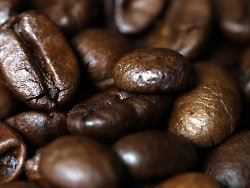Monday, July 26th 2021
Capricious weather conditions in Brazil
Coffee is experiencing “astronomical” price increases
Coffee farmers in Brazil are struggling with drought and frost. The prognoses for a high-yield harvest are not good. Consumers are still not aware of a price increase – but that could soon change. Producers have been suffering for years.
Capricious weather conditions hit the world’s largest coffee producer Brazil hard and caused the prices of beans to rise dramatically. The price planned for later trade for Arabica coffee, one of the South American country’s most important raw material exports, was just under 3.50 euros per kilo on Friday – the highest level since 2014. Consumers will therefore have to expect higher prices in the future to calm down.
The price of Arabica coffee has soared 60 percent since January. And the price of Robusta coffee – which is used for instant granules and is mainly grown in Asia – has also seen a price increase of almost 40 percent in the year to date.
“There are several reasons for the astronomical rise in the price of coffee,” says Rabobank analyst Carlos Mera. The main reason is the devastating weather conditions in Brazil, but rising transport costs and political unrest in the third largest production country, Colombia, also play their part.
Brazil suffered an historic drought earlier this year. Last week, frost followed on key plantations in Minas Gerais – an inland southeastern state that is where 70 percent of the country’s arabica beans come from. “The freezing temperatures caused leaf fall and destroyed the youngest plants,” says Mera. These are crucial for future harvests.
Global coffee demand is growing strongly
Arabica is also so badly affected because the plant has a two-year cycle, in which low-yield production in one year is followed by a bumper harvest the next year. At the same time, global coffee demand picked up again sharply after the effects of the corona pandemic, while café and restaurant operations were partially restricted.
Consumers are currently not aware of any of this, but that can change: The rising prices are only slowly being passed on to consumers, says Mera. “The roasters use the price planned for later trade to hedge against short-term increases,” says the expert. Therefore, it usually takes three to nine months for the effects to be felt in retail. In addition, the cost of coffee has been particularly low in recent years, as raw materials economist Philippe Chalmin explains. He recalled that a kilo of Arabica cost more than five euros in May 2011.
In the end it was not the consumers who suffered, but the producers, says Valeria Rodriguez from the fair trade association Max Havelaar. You would have experienced a very long price crisis. “In the past four or five years most of them have worked at a loss,” she says. The new crop damage made the situation even worse.
.
